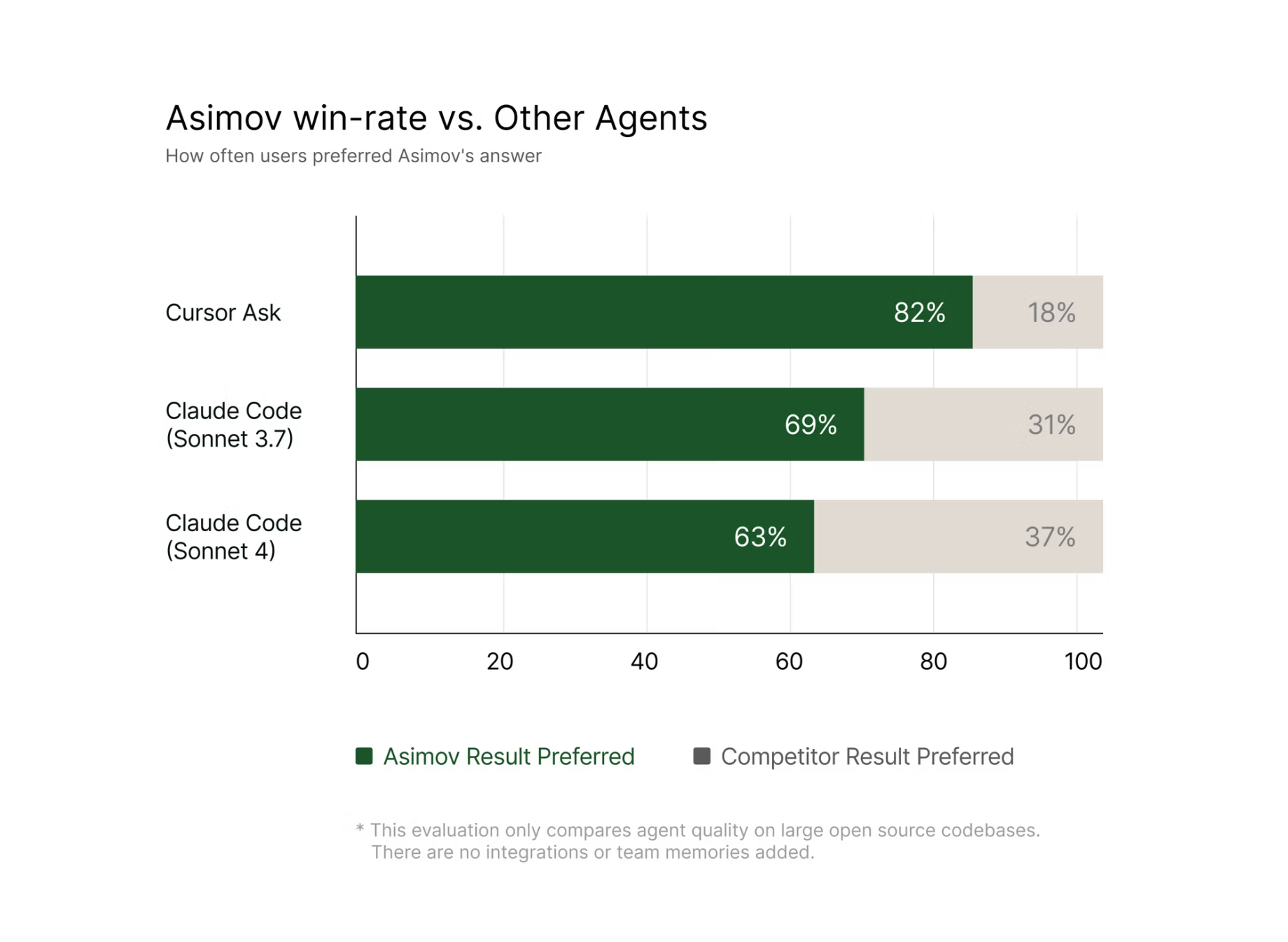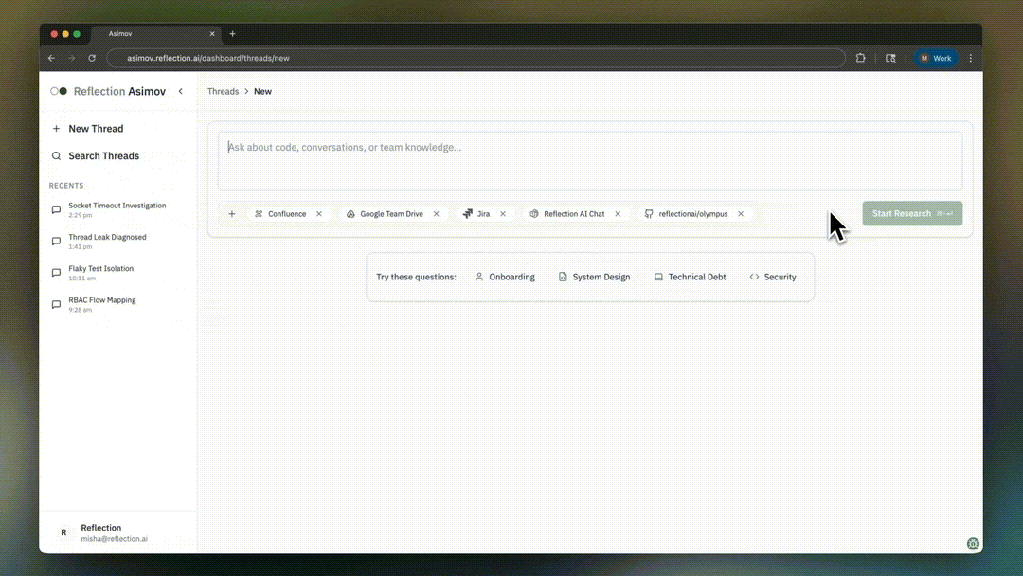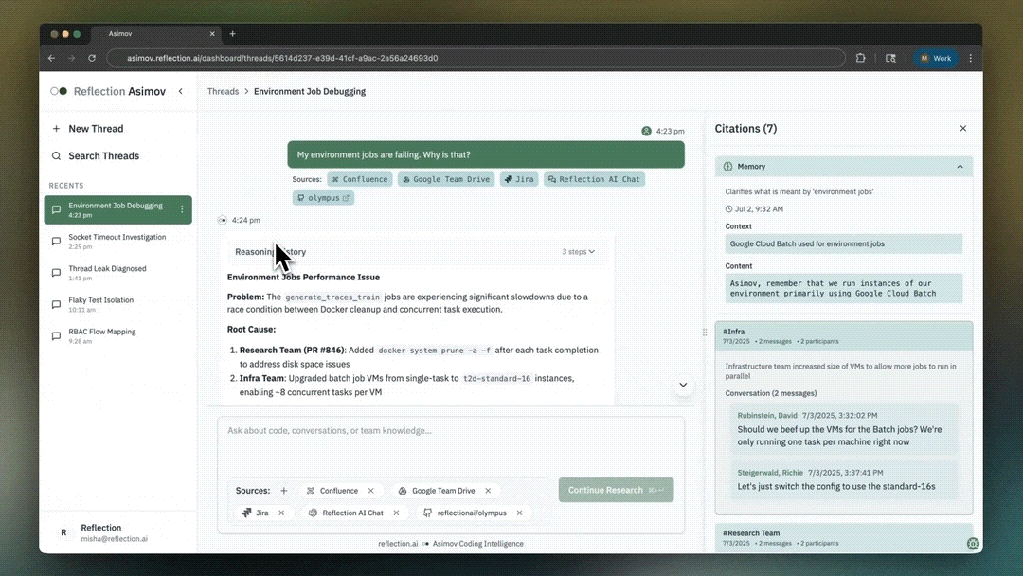Reflection AI Launches Asimov: Breakthrough Agent for Code Comprehension
Reflection AI’s first product milestone.
What if you could have Jeff Dean on your team? Exceptional technical prowess, broad systems thinking, deep tribal knowledge, the best leader and mentor, and a truly reliable backbone for your team.
Today, Reflection AI is excited to launch Asimov: the best research agent for code understanding. Think: Deep Research for code comprehension. Superintelligent just like Jeff Dean would be on your team.
The most impactful opportunity isn’t simply in code generation; it’s in code comprehension. Engineers spend a minority of time writing code, but the majority of time understanding and designing code. It’s the time spent parsing through complex codebases, doing whiteboard sessions with colleagues, searching through threads in Slack and Linear, rabbit hole-ing down questions inside Cursor, Windsurf, ChatGPT, and Stack Overflow.
The true unlock for engineering teams? Deeply understanding complex codebases and the business logic around them.
What if Asimov could unblock any engineer on your team with the tribal wisdom otherwise stored in that one senior architect’s mind? What if Asimov could evolve with the most omniscient and real-time memory of your team?
Asimov is already the best-in-class agent for code comprehension. In a blind testing with maintainers of some of the largest OSS projects, Asimov’s answers were preferred a majority of time relative to Cursor Ask and Claude Code (Sonnet 3.7 and 4).

How?
1. Asimov builds a single source of truth for engineering knowledge
Asimov sees everything. It ingests entire codebases, architecture docs, GitHub threads, chat history, and more. It builds persistent memory of your systems, remembers key decisions, and acts as a trusted brain for an engineering organization.

2. Asimov captures team-wide tribal knowledge
While other products focus on individual developer preferences through rules or README files with instructions for agents, Asimov Memories enable engineering teams to capture team-wide tribal knowledge.
Engineers can update Asimov’s knowledge, e.g. “@asimov remember X works in Y way.” This allows the most senior engineers to offload the context stored in their heads to Asimov, which benefits the team at large. Memories come with a permissioned role-based access control system to allow an organization to control who can edit Asimov’s knowledge.

3. Asimov is designed to ingest a lot of information
Asimov uses a multi-agent architecture to achieve state-of-the-art performance on code comprehension. The architecture consists of many small long context agents (retrievers) that retrieve relevant information from a large codebase and one large short-context reasoning agent (combiner) that synthesizes this information into a coherent answer to the user query. This design is similar in spirit to other frontier agentic research architectures but applied to the problem of code understanding. The current release of Asimov is powered by third-party models, but we are actively training our own models to improve Asimov’s performance.

The results speak for themselves.
As Reflection incorporates its own frontier models over time, I’m bullish it will only further enable Asimov to become the most powerful code comprehension agent available.
One of my core deep beliefs (h/t Misha & Ioannis) is that the best products are built by those who build both model intelligence and end application, coupled together. We see this playing out already in other domains—Deep Research, trained with end-to-end RL for market research, and Codex and Claude Code, trained with end-to-end RL for code generation.
Our belief in Reflection AI reflects our conviction in the same approach: a new frontier lab has come to town, coupling model intelligence (results coming soon!) with end product application, building the most powerful coding agents on the path to superintelligence.
Asimov, the best-in-class research agent for code comprehension, is our first step on that path.
Give Asimov a try to accelerate your own engineering teams! And stay tuned for more.


